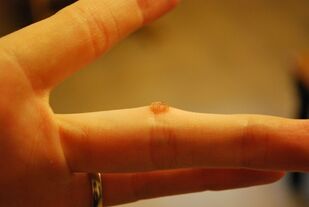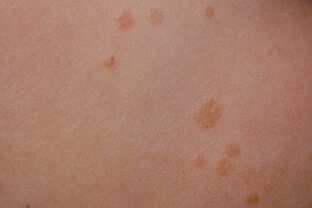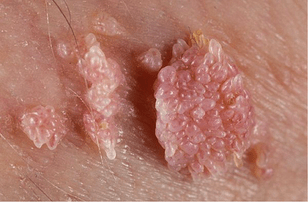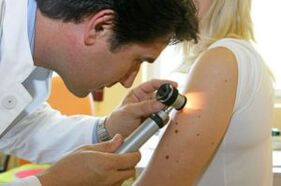Papillomas are benign neoplasms localized on the skin and mucous membranes. They are caused by the activation of the human papilloma virus (HPV) and are of different types. Some of them are harmless and create only a cosmetic defect, others are potentially dangerous and can develop into a cancerous tumor.
Mechanism of papilloma formation
The appearance of a certain type of neoplasm depends on the type of virus with which the person is ill. Distinguish between a weakly oncogenic strain in which the growths do not pose a great danger to the carrier and a highly oncogenic one. Neoplasms appear due to the papilloma virus, whose action leads to excessive cell division, as a result of which growth gradually increases.
“Safe” papillomas usually occur on the skin, while the most exciting ones are localized in the mucosa.Such neoplasms usually cause highly oncogenic virus types. For women, the appearance of growths in the genital area can be dangerous for cervical cancer.

Common papillomas (warts)
One of the most common manifestations of HPV, popularly known as "warts". Their appearance is usually due to the action of weakly oncogenic strains that are transmitted by contact and daily life.
Warts usually occur on the toes, palms, soles or feet.
From the outside they look like small papillary neoplasms with homogeneous structures. Ordinary papillomas are soft to the touch, at the beginning of the disease their pigmentation is weak: the color is practically indistinguishable from the color of the body.
However, as the disease progresses, the growth grows and begins to darken. Sometimes hair can grow in the center of the nipple.
Filiform papillomas
This type of papilloma got its name because of its small legs, thanks to which the neoplasm protrudes above the surface of the skin. The growth is characterized by an elongated shape and is about 5 mm in size. Papillomas are most often localized in places where the skin is thinnest:
- chest;
- neck;
- eyelids;
- groin area;
- armpit.
Filiform papillomas are more typical for patients older than 45, but sometimes they also occur in young people.Growths tend to get bigger as the disease progresses.Gradually they start to stretch more.
The head of the papilloma is yellow or pink, there is no pronounced pigmentation. Keratinized neoplasm can rarely be found. With trauma, the pain is not noticed. Several others may appear at the site of damaged filiform papilloma. If the growths are on the face, it is recommended to stop using peels or brushes. In the armpit area, papillomas are also injured by razors, which can negatively affect a patient’s health.

Flat papillomas
This form of papilloma is also localized on the skin and resembles small plaques. Flat papillomas have a yellowish tinge, the size does not exceed 1-2 mm. The growths are dense in structure, their root is under the skin. Therefore, pain may occur at the time of damage or pressure. Also, this structural feature sometimes leaves scars after removal of clumps.
Typical symptoms that accompany the appearance of flat papillomas:
- redness of the skin around the growth;
- itching;
- pain on touch;
- inflammation.
Usually growths appear on the face or hands, but sometimes they also appear on the genitals. In women they are usually found on the labia majora, in men on the scrotum or anus. Flat papillomas enlarge rapidly and bleed when traumatized.
Genital warts

These growths are usually found in the groin or mucous membranes. They are caused only by strains of HPV that occur during unprotected sex. They hit most often:
- vagina; vulva;
- cervix;
- anal area;
- scrotum;
- penis.
The growths are similar to thin papillae, they are small - 2-3 mm. Usually, the virus is not limited to the appearance of a single neoplasm. Warts are characterized by the appearance of several growths at once, gradually merging with each other. Neoplasms grow and grow rapidly. At this point their shape begins to resemble cauliflower inflorescences.
Genital warts are considered to be one of the most dangerous types of papillomas.In addition to the fact that these growths are able to grow into a malignant tumor, they are often accompanied by infection. Also, neoplasms are prone to relapse after removal, so patients will need to undergo regular checkups to control HPV levels.
In rare cases, condyloma can form on internal organs such as the walls of the stomach or rectum. In this case, it is impossible to independently diagnose the presence of a neoplasm. The lack of specific symptoms can become a problem in the diagnosis and treatment of the disease.
Lewandowski-Lutz papillomas
A fairly rare type of papilloma. They most often occur in the feet and hands. The characteristic feature of the growth is the uneven edges. They are usually brown in color, but can sometimes have a dark red hue. This form of the disease can also contribute to the degeneration of neoplasms into malignancies, so patients should seek medical attention as soon as possible.

Plantar warts
These growths are more typical for children and adolescents, rarely occurring in adulthood. It is considered a common reaction of the body to reduced immunity, accompanied by trauma to the soles due to uncomfortable shoes. Unlike normal blisters, the nipple has rough and uneven edges. Also, the skin pattern is clearly visible on the blister.
Plantar warts are characterized by a small spot on the surface of the skin and a large base that grows subcutaneously. It is usually completely keratinized due to constant abrasion when walking. Over time, growth increases, squeezing them out or touching them causes discomfort and pain.
Due to the nature of the structure, it is difficult to remove the wart from the skin because most of it is inside. Therefore, sutures are often required after removal, and the scar may remain at the site of the procedure.
Juvenile papillomas
Most infections occur in young children under the age of 5, because the infection usually occurs during childbirth. If a pregnant woman is a carrier of the papilloma virus and has genital warts in the vaginal area, there is a high probability that the baby will become infected.

Juvenile papillomas found on the skin are not dangerous. However, they can also be localized in the larynx, which can make it difficult for the baby to breathe. In the initial phase, no signs of the disease are noticed. After a while, the following symptoms appear:
- feeling of a lump in the throat;
- difficulty swallowing saliva or food;
- impaired respiratory function.
Older children may experience changes in their voice, which is a characteristic sign of ligament damage. Papillomas can grow and cause asthma attacks, which may one day result in complete cessation of breathing.
Papillomatosis
Papillomatosis is a condition in which the number of tumors increases dramatically and spreads throughout the body. It is also called generalized papilloma virus. Usually a large accumulation of papillomas occurs on the hands, face, in the genital area. Papillomatosis, which occurs in the area of the mucosa or internal organs, is potentially dangerous for people.
Papillomatosis is most often mentioned when juvenile papillomas appear in the laryngeal region. They are the ones who tend to outgrow it.

Conclusion
Despite the fact that there are relatively safe forms of papillomas, each of them should be examined regularly by a specialist. This will help keep the growth under control and remove them immediately if necessary. In addition, it is important to remember that the presence of neoplasms is an indicator of papilloma virus infection, which also requires timely therapy.























